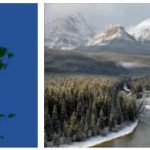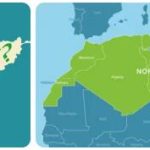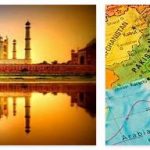Europe is one of the smallest continents on Earth. About 40 thousand years ago in Europe, modern people replaced the Neanderthals, and since then European civilization has begun. According to ancient Greek mythology, Europe was the daughter of the Phoenician king Agenor and Telefassa, who was kidnapped by Zeus. Subsequently, Europa became the wife of Zeus. See Europe abbreviations.
Geography of Europe
Europe is washed by the waters of the Arctic Ocean, the Atlantic Ocean, as well as the Mediterranean, Black and Caspian Seas. The eastern border of Europe runs along the Ural Mountains.
The continent of Europe includes numerous islands, peninsulas and archipelagos. The coastline of continental Europe covers 38,000 kilometers. The total area of Europe is 9.938 million square meters. km (this is 2% of the Earth’s territory). Europe is part of the Eurasian Peninsula.
The climate in most of Europe is temperate, in southern Europe it is Mediterranean and even partially subtropical with warm, humid winters and hot summers. On the Svalbard archipelago, which geographically also belongs to Europe, the climate is subarctic and arctic.
The longest river in Europe is the Volga (3645 km), which flows through Russia. The list of the largest European rivers also includes: the Danube (2960 km), the Dnieper (2201 km), the Don (1870 km), the Kama (1805 km), the Dniester (1352 km), the Rhine (1233 km), the Elbe (1165 km), Ural (2428 km), Vistula (1047 km), Tahoe (1038 km), Loire (1012 km), Oder (854 km) and Neman (937 km).
In Europe, there are several very large, and also very beautiful, lakes. Among them are Lake Ladoga, Peipsi and Onega in Russia, Lake Vänern in Sweden, Lake Balaton in Hungary and Lake Geneva in Switzerland and France.
Approximately 17% of the territory of Europe is occupied by mountains – the Pyrenees, the Alps, the Apennines, the Carpathians, the Balkans, the Caucasus, the Urals and the Scandinavian mountains. The highest mountain of this continent is Elbrus (Russia), its height is 5,642 meters.
European population
At the moment, the population of Europe already exceeds 842 million people. This is about 13% of the total population of the Earth. Most Europeans live in Eastern Europe.
Almost the entire population of Europe belongs to the Caucasoid race, which is divided into several smaller races:
- Atlanto-Baltic race (Great Britain, Ireland, Scandinavia, Iceland, northern Germany, the Netherlands, Estonia and Latvia);
- Central European race (central regions of Western Europe, most of the territory of Eastern Europe, Ukraine and the European part of Russia);
- Balkan-Caucasian race (Albania, Croatia, Serbia, Bosnia and Herzegovina, northern Greece, Bulgaria, southern Austria and northern Italy);
- Indo-Mediterranean race (Spain, Italy, France, southern Greece, Cyprus and Malta);
- White Sea-Baltic race (northern territories of Russia, Lithuania and partly Latvia).
Countries of Europe
At the moment, there are 56 countries in Europe (of which 6 countries are the so-called unrecognized republics). The largest European country is Russia (its territory occupies 17,098,242 sq. km), and the smallest is the Vatican (0.44 sq. km). By the way, more than 291 million people now live in Russia. See countries in Europe.
Regions of Europe
Sometimes Europe is divided into 5 regions (Western, Eastern, Northern, Southern and Central), which in turn are divided into seven geographical sub-regions:
- Scandinavia (Iceland, Norway, Sweden, Finland and Denmark);
- British Isles (Great Britain and Ireland);
- Western Europe (France, Belgium, the Netherlands, Luxembourg and Monaco);
- Southern Europe (Portugal, Spain, Andorra, Italy, Malta, San Marino and the Vatican);
- Central Europe (Germany, Switzerland, Liechtenstein, Austria, Poland, Czech Republic, Slovakia and Hungary);
- Southeast Europe (Slovenia, Croatia, Bosnia and Herzegovina, Serbia, Montenegro, Albania, Macedonia, Romania, Bulgaria, Greece and the European part of Turkey);
- Eastern Europe (Estonia, Latvia, Lithuania, Belarus, Ukraine, Moldova, Russia, Georgia, Armenia and Azerbaijan).
Many cities in Europe were founded before our era. Now the most densely populated city in Europe is Istanbul, the former capital of Turkey, which is home to more than 12.2 million people.
Traveling around Europe can be done at any time of the year: when choosing a place for a beach holiday or where to go to Europe for the New Year, consider different options according to experienced tourists.
Other major cities in Europe are Moscow, London, St. Petersburg, Berlin, Madrid, Rome, Kyiv, Paris, Bucharest and Budapest. However, some European cities that play a significant political and cultural role in the world have relatively few inhabitants. These cities include Athens, Oslo, Brussels, Copenhagen and Geneva.








